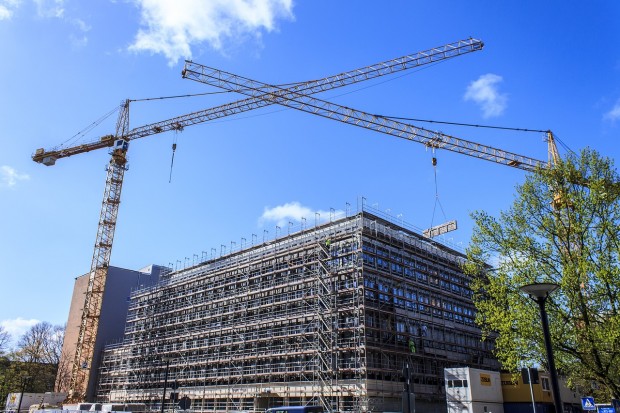Natural disasters are unavoidable and cannot be controlled. But what should you do to get ready for this catastrophe when you are working on a building site? Look at some of the most essential guidelines for protecting your building site, especially your workers, from the effects of natural disasters.

(Photo : Pixabay/khalhh)
Develop a disaster preparedness plan.
Creating an emergency response plan that addresses how you and your employees would behave in the event of a crisis is something you should do for each of the scenarios that you have placed on your list.
As part of this plan, you will be tasked with identifying the sections of the construction site that require reinforcement. Examples are the sites of generators, cranes, and other heavy equipment that could be thrown over by natural disasters such as hurricanes and earthquakes. As mentioned, essential personnel should be assigned responsibilities in the event of a catastrophe. Amid the chaos that the horrific incident unleashed, this will ensure that communication and decision-making go without any difficulties.
Establish a command post and first-aid station.
When there is a catastrophe, communication and decision-making processes must continue to flow freely. Therefore, building a central command spot that employees can consult to receive direction is essential. The location of the command post should be chosen so that it is situated in an area that is least likely to be impacted by a catastrophe.
Moreover, an inventory of essential equipment such as reserve power, site layouts and blueprints to assist first responders, a compilation of employee contact information, and radios to ensure uninterrupted communication during an electrical outage are all essential components of a command post. The command post should function as a first-aid station if someone sustains an injury. Additionally, it is necessary to have first-aid kits, bandages, and other medical supplies on hand.
Also Read: Marketing Strategies to Elevate Your Construction Business into Digital Footprint
Train employees in disaster preparedness.
Employees are some of the most influential people involved in developing a disaster preparedness strategy. As a result, they ought to be incorporated into the planning phase. Employees provide invaluable knowledge regarding potential dangers on the job site and how they could manifest themselves.
Moreover, a briefing on the disaster readiness plan should be given to employees, which should cover topics such as evacuation protocols, emergency contacts, and the utilization of emergency equipment. Employees should be educated on probable disasters and the protocols that should be followed if they occur through the company's regular disaster preparedness seminars, which should be held regularly. Supplementing this training with practice exercises will guarantee that each employee is sufficiently prepared. It is also essential to invite relevant organizations and authorities who can provide the company with helpful information.
Select Durable Materials
Construction durability depends on materials. You can't forecast how a fire, storm, or flood will affect your building project, but you can minimize damage. However, since durable materials may be more expensive, consult with your clients before committing to them. If the client places significant emphasis on natural disaster preparedness, they might have greater latitude in selecting materials. Consider utilizing premium materials to fortify the structure against external forces such as intense winds and inundation.
Secure Materials and Equipments On-site
Strong winds and rain can convey or degrade items. Natural catastrophes can damage construction equipment like cranes, excavators, and backhoe loaders. In a natural disaster, construction workers may also leak toxic chemicals that harm the environment.
Thus, prepare for disasters by fastening or storing items and equipment off-site. Make sure construction teams follow a plan for securing supplies, tools, and equipment after each day.
Related Article: 5 Clever Strategies to Protect Your House from Wildfires







